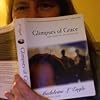David Erik Nelson
When it comes to writing craft and DIY, I've learned a couple things the Very Very Hard Way:
1) TAKE GOOD NOTES! (Including supply costs, where you sourced parts, stock numbers, etc.) Everything is clear and obvious while you're developing a project, but let it sit on the shelf for a week or two, and you'll find yourself wondering why you made the decisions you did and how the hell you pulled them off.
2) Work through a project while writing it up, even if you've done the project a hundred times. Actually working through your steps while writing, and then again while revising, makes it much easier to see the places where folks might go off track or get confused.
3) Don't fall in love with insider jargon. There are plenty of folks who never get into knitting, for example, because they can't get their heads around the jargon and codes that knitters use. Feel free to be the person who describes it differently, and thus opens that craft up to the folks who were previously locked out.
4) Learn to take decent photos. Publishers (and readers) will want them, and want them to be as clear as possible (non-distracting, solid-colored background; lots of bright light; soft shadows; no glare; etc.) Similarly, if your work is best described with diagrams, learn to use SketchUp or Fritzing or Pixelmator or whatever it takes to make the images you need.
1) TAKE GOOD NOTES! (Including supply costs, where you sourced parts, stock numbers, etc.) Everything is clear and obvious while you're developing a project, but let it sit on the shelf for a week or two, and you'll find yourself wondering why you made the decisions you did and how the hell you pulled them off.
2) Work through a project while writing it up, even if you've done the project a hundred times. Actually working through your steps while writing, and then again while revising, makes it much easier to see the places where folks might go off track or get confused.
3) Don't fall in love with insider jargon. There are plenty of folks who never get into knitting, for example, because they can't get their heads around the jargon and codes that knitters use. Feel free to be the person who describes it differently, and thus opens that craft up to the folks who were previously locked out.
4) Learn to take decent photos. Publishers (and readers) will want them, and want them to be as clear as possible (non-distracting, solid-colored background; lots of bright light; soft shadows; no glare; etc.) Similarly, if your work is best described with diagrams, learn to use SketchUp or Fritzing or Pixelmator or whatever it takes to make the images you need.
More Answered Questions
About Goodreads Q&A
Ask and answer questions about books!
You can pose questions to the Goodreads community with Reader Q&A, or ask your favorite author a question with Ask the Author.
See Featured Authors Answering Questions
Learn more





